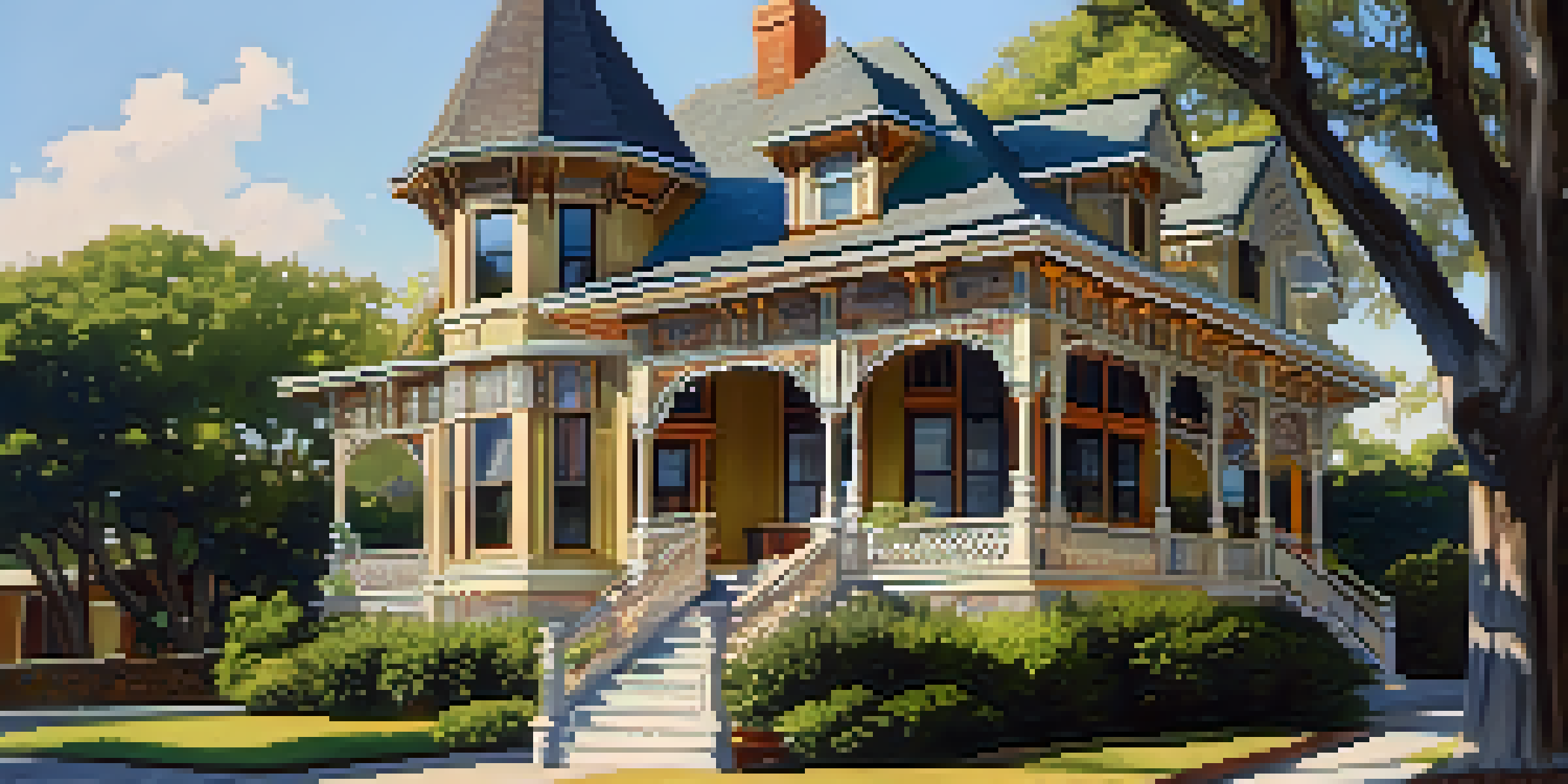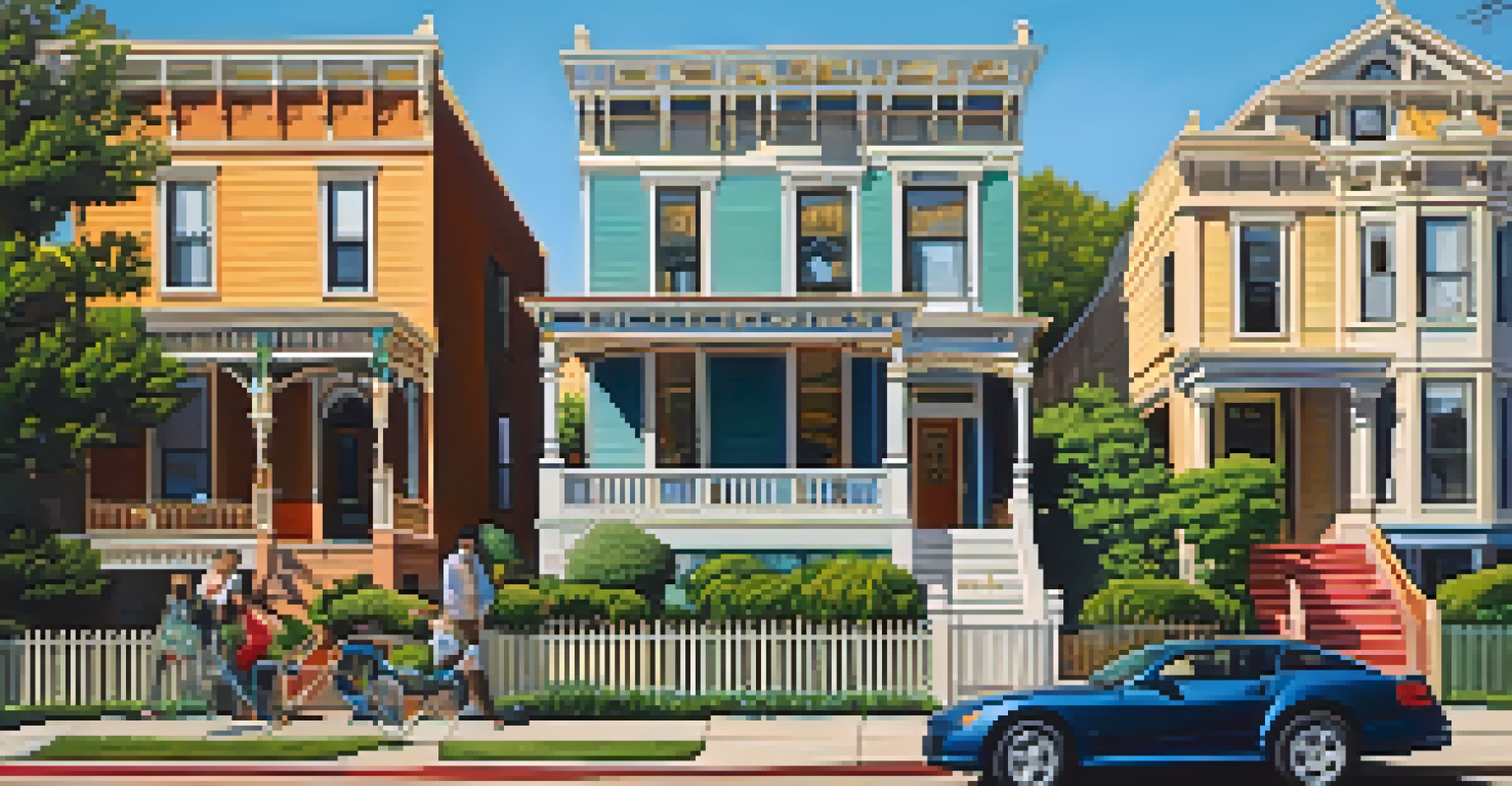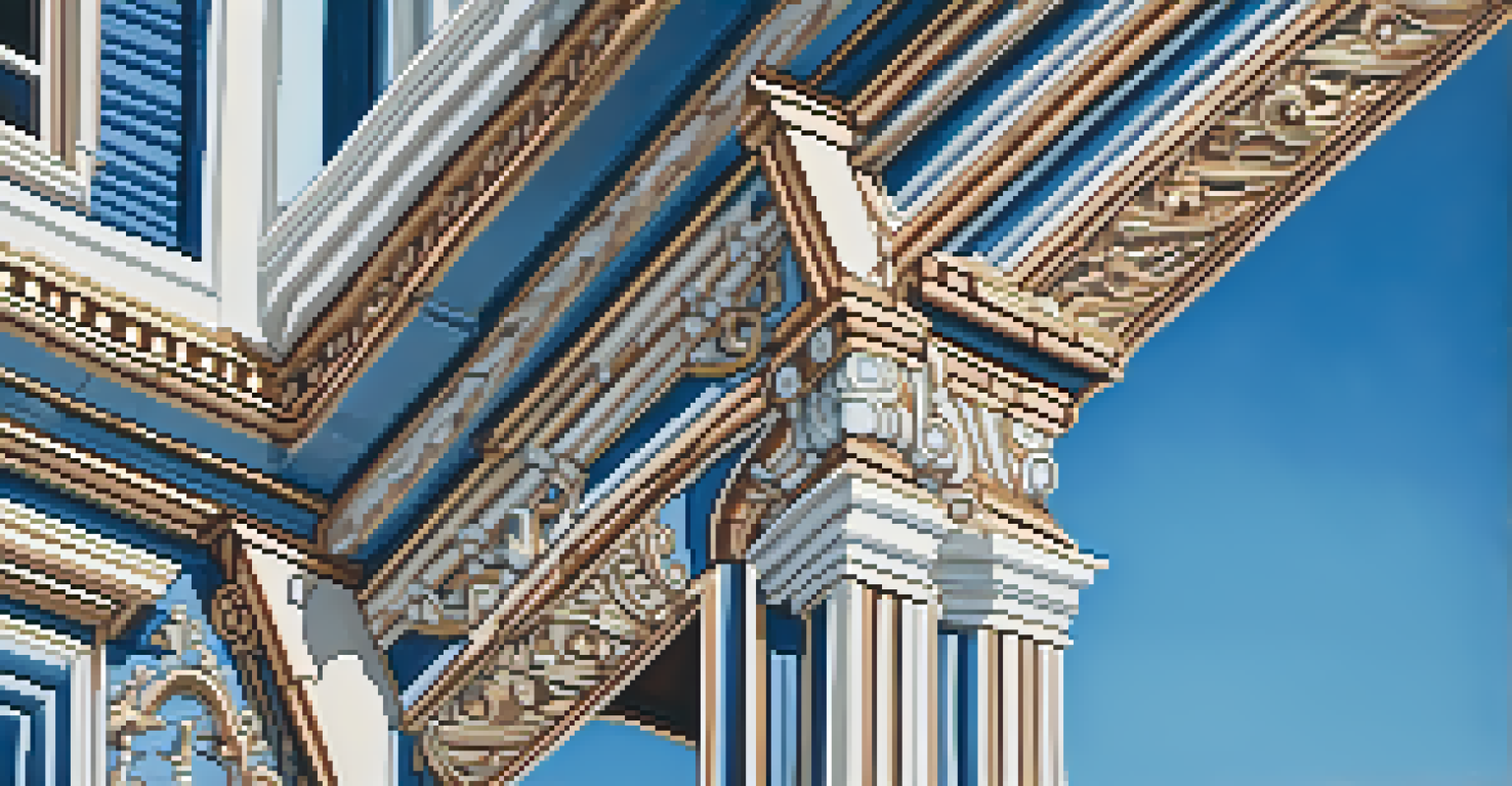The Influence of Victorian Architecture in Austin's Design

Victorian Architecture: A Brief Overview
Victorian architecture, prevalent in the 19th century, is characterized by its ornate detailing and eclectic styles. This architectural movement arose during the reign of Queen Victoria, blending various influences from Gothic to Italianate designs. The focus on craftsmanship and intricate ornamentation set it apart from earlier simpler styles, making it a significant period in architectural history.
Architecture is the art of how to waste space.
In the United States, Victorian architecture gained traction as cities expanded and prosperity grew. Buildings often featured asymmetrical facades, vibrant colors, and elaborate trim, creating visually striking structures. This approach aimed to showcase wealth and status, reflecting the cultural values of the time.
Today, Victorian architecture serves not only as a historical reference but also as an inspiration for modern designs. Its impact can be seen in various cities across the U.S., including Austin, where the style has left a lasting legacy in the urban landscape.
Austin's Architectural Landscape: A Historical Context
Austin's growth in the late 19th century coincided with the Victorian era, creating a perfect backdrop for the architectural style to flourish. As Texas's capital, Austin attracted settlers and builders, eager to showcase their prosperity through elaborate homes and public buildings. The city soon became a canvas for Victorian architectural expressions.

Notably, areas like the Old West Austin Historic District are home to numerous Victorian-style homes, featuring the iconic gingerbread trim and expansive porches typical of the era. These structures not only capture the charm of Victorian design but also tell the stories of the families who lived there. As a result, they contribute to Austin's rich narrative and cultural identity.
Victorian Architecture's Rich Legacy
Victorian architecture, characterized by ornate detailing and eclectic styles, significantly shapes the cultural and architectural landscape of Austin.
The preservation of these historic buildings has become a priority for the city, ensuring that the Victorian influence remains a part of Austin's architectural heritage. This commitment to preservation reflects a broader understanding of how architecture shapes community identity and pride.
Key Features of Victorian Architecture in Austin
Victorian architecture in Austin boasts several standout features that make it recognizable. From intricate woodwork to bold color palettes, these homes often exhibit a mix of styles that highlight the eclectic nature of the period. Elements like bay windows, steep gabled roofs, and decorative brackets are common, providing a sense of depth and character.
Preservation is the key to our past, our present, and our future.
The use of asymmetry is a hallmark of Victorian design, leading to unique and varied facades across Austin's neighborhoods. This design choice not only breaks away from traditional symmetry but also adds to the charm and individuality of each home. It's this diversity that captures the imagination of residents and visitors alike.
Moreover, many Victorian homes in Austin incorporate expansive porches, inviting residents to enjoy the warm Texas climate. These outdoor spaces serve as gathering spots for families and friends, further emphasizing the community aspect inherent in Victorian architecture.
Modern Interpretations of Victorian Design
While Victorian architecture remains deeply rooted in history, it has also evolved to inspire contemporary designs. Architects in Austin often draw on Victorian elements to create new structures that pay homage to the past while meeting modern needs. This blend of old and new results in innovative designs that resonate with both residents and architects.
For instance, modern homes may incorporate Victorian-inspired features such as decorative moldings or vibrant color schemes, yet they often utilize contemporary materials and technologies. This fusion not only respects the architectural legacy but also enhances energy efficiency and functionality. It showcases how historical styles can adapt to current trends without losing their essence.
Preservation Efforts in Austin
Community involvement and dedicated organizations work tirelessly to preserve Austin's Victorian heritage, ensuring its historical integrity for future generations.
Such adaptations also reflect a growing appreciation for sustainable practices in architecture. By embracing Victorian elements, modern designs can create environments that are both aesthetically pleasing and environmentally responsible, ensuring that the spirit of Victorian architecture continues to thrive in Austin.
The Role of Preservation in Austin's Victorian Legacy
Preservation efforts are crucial in maintaining the integrity of Austin's Victorian architecture. Organizations like the Austin Historic Preservation Office work diligently to protect these historic structures from demolition and neglect. Their efforts ensure that future generations can appreciate the artistry and craftsmanship of Victorian homes.
Community involvement plays a significant role in these preservation initiatives. Residents often rally together to preserve their neighborhoods' character and history, advocating for policies that support heritage conservation. This grassroots engagement fosters a sense of ownership and pride among community members, enhancing the collective identity of Austin.
Moreover, preservation opens opportunities for education and tourism. By highlighting the importance of Victorian architecture, Austin can attract visitors interested in history and design, further enriching the local economy and cultural landscape.
The Influence of Victorian Architecture on Local Culture
Victorian architecture has significantly influenced Austin's cultural identity, shaping the way residents interact with their environment. The ornate details and inviting porches of Victorian homes foster a sense of community, encouraging social connections among neighbors. This architectural style has become intertwined with the lifestyle and values of the city.
Cultural events and festivals often celebrate this unique architectural heritage, drawing attention to the beauty and craftsmanship of Victorian designs. For instance, home tours showcasing historic neighborhoods allow residents and visitors to appreciate the intricate details of these homes firsthand. Such events not only honor the past but also inspire a sense of belonging among participants.
Modern Interpretations of Victorian Style
Contemporary designs in Austin increasingly incorporate Victorian elements, blending historical aesthetics with modern functionality and sustainability.
Furthermore, this architectural influence extends beyond homes to public buildings, parks, and community spaces in Austin. By incorporating Victorian elements into various aspects of design, the city creates a cohesive aesthetic that reflects its historical roots while embracing modernity.
Future Directions: Blending Victorian and Contemporary Styles
As Austin continues to grow and evolve, the blending of Victorian and contemporary architectural styles presents exciting possibilities. Architects and designers are increasingly experimenting with incorporating Victorian elements into new constructions, creating spaces that honor the past while addressing modern needs. This approach fosters a dialogue between history and innovation.
For example, new developments may feature Victorian-inspired facades, but with modern materials and energy-efficient designs. Such creative combinations not only enhance visual appeal but also promote sustainability within the architectural landscape. This trend reflects a broader commitment to preserving history while advancing into the future.

Ultimately, the future of architecture in Austin lies in this harmonious blend of styles. By respecting the influence of Victorian design, the city can cultivate a unique identity that celebrates its rich heritage while remaining adaptable to contemporary challenges and opportunities.